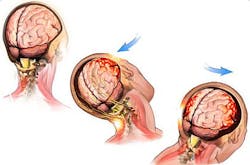DARPA seeks to develop implantable device to help brain-injured people regain their memories
Officials of the Defense Advanced Research Projects Agency (DARPA) in Arlington, Va., released a presolicitation late last week (DARPA-BAA-14-08) for the Restoring Active Memory (RAM) program, which seeks to develop an implantable neural device that helps brain-injured people recover their memories.
The RAM program also seeks to develop models of complex hierarchical memories and explore neurobiological and behavioral distinctions between memory function using the implantable device versus natural learning and training.
Recent advances in neuroscience have developed brain-computer interface (BCI) devices to help injured people regain motor function to control prosthetic limbs. This RAM program seeks to take this discipline one step further to help people recover their memories.
About 1.7 million people in the U.S. are diagnosed with traumatic brain injury (TBI) every year, DARPA officials say. Advances in neuroengineering applications enabling memory restoration are critical for individuals with TBI.
DARPA is seeking proposals to develop a neural device for human clinical use to restore specific types or attributes of memories. To do this the program has three separate thrusts: developing a computational model of neurobiological mechanisms underlying memory in humans; developing a portable, secure wireless prototype implantable neural device for restoring memory encoding in human clinical populations; and investigating several types of complex memories in animals to develop computational models to restore memory function.
All proposers must address the first technical area, and are encouraged to address the second and third areas, as well.
For the first technical area proposers should develop a computational model of human neural and behavioral function underlying memories that can be recalled. The model should distinguish neural activity underlying information that converts to long-term memories and can be recalled hours, days, or weeks later.
For the second area proposers must describe efforts to develop real-time performance of a prototype neural device that uses the computational model to restore memory. The device must use implantable probes to record and stimulate human brain activity, a portable computational device for computational model, and secure wireless telemetry.
For the third technical area proposers must test their computational models on animals in preparation for moving the prototype to human subjects.
Companies interested should submit white papers no later than 3 Dec. 2013, and full proposals no later than 9 Jan. 2014. DARPA officials say they plan to award several contracts.
For questions or concerns email DARPA's Geoffrey Ling at [email protected]. More information is online at https://www.fbo.gov/spg/ODA/DARPA/CMO/DARPA-BAA-14-08/listing.html.
